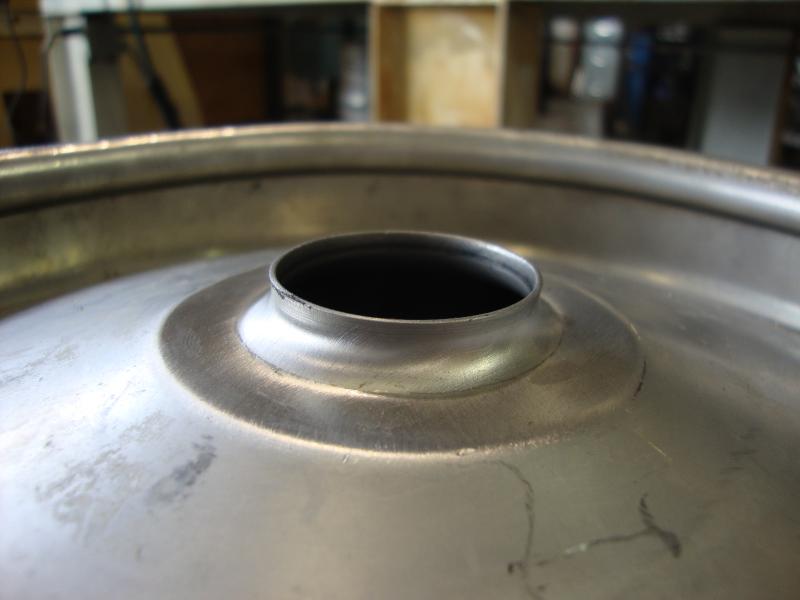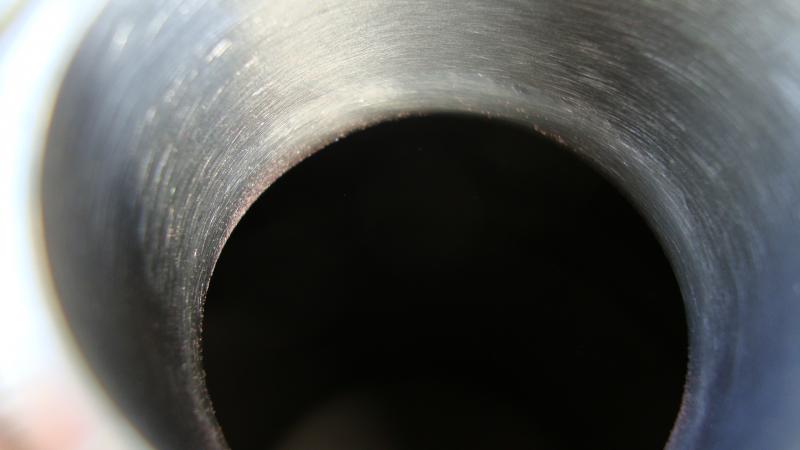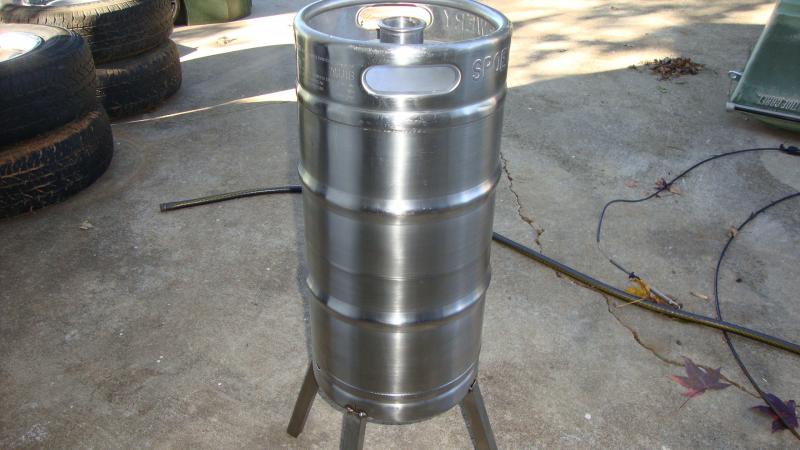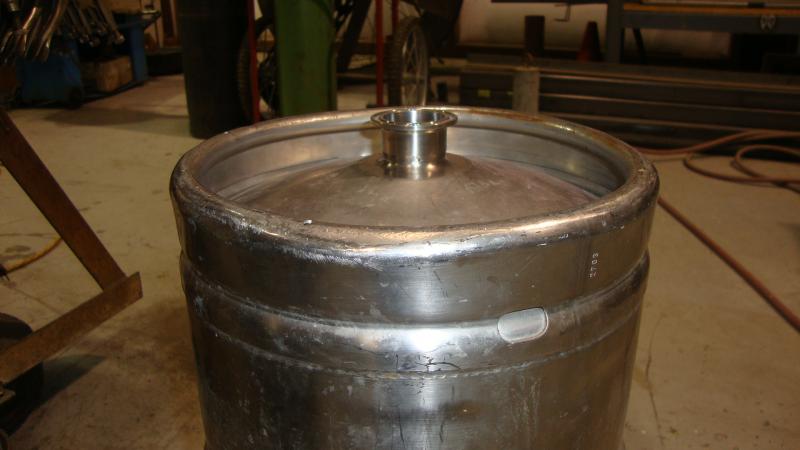Learned this technique from a guy that does sanitary welding.
Doing this makes it possible to reach the backside of a weld and address any imperfections that may arise.
Just slapping a fitting on top and welding I have found is easy but does not look as good either.
To tell you the truth, this method proved to be even easier than expected, and the result is a more professional look and completely sanitary weld.
I did this work for a local brewery that wanted to be a be able to push a five gallon pitch of yeast into their fermentors, instead of their usual method of pitching from the top on a ladder. They have 40 bbl fermentors so it's about 15 feet at the top.
The tool is simply a piece of steel with an 8 degree taper on it. A hole drilled thru the center and a piece of all-thread tack welded to it with a nut on the end. Now that I think about it, the nut is not necessary.
The other part of the tool is just a piece of pipe capped on the end with an over sized nut welded on top for the all-thread to pass thru. Again the nut is optional, but that's how I constructed it.
The cone passes thru the hole from the inside with the pipe portion of the tool sitting over the hole. The all-thread passes thru the capped pipe, and the cone is pulled thru the hole by turning the nut on the all-thread until the entire cone passes thru the wall of the keg
To pull the hole I drilled a 7/8" hole and de-burred the hole and smoothed the edges so the metal would not tear while the cone was pushing it's way thru the hole. The result is a flanged 1 3/8" ID hole to match the ID of the fitting to be welded to the keg.





Doing this makes it possible to reach the backside of a weld and address any imperfections that may arise.
Just slapping a fitting on top and welding I have found is easy but does not look as good either.
To tell you the truth, this method proved to be even easier than expected, and the result is a more professional look and completely sanitary weld.
I did this work for a local brewery that wanted to be a be able to push a five gallon pitch of yeast into their fermentors, instead of their usual method of pitching from the top on a ladder. They have 40 bbl fermentors so it's about 15 feet at the top.
The tool is simply a piece of steel with an 8 degree taper on it. A hole drilled thru the center and a piece of all-thread tack welded to it with a nut on the end. Now that I think about it, the nut is not necessary.
The other part of the tool is just a piece of pipe capped on the end with an over sized nut welded on top for the all-thread to pass thru. Again the nut is optional, but that's how I constructed it.
The cone passes thru the hole from the inside with the pipe portion of the tool sitting over the hole. The all-thread passes thru the capped pipe, and the cone is pulled thru the hole by turning the nut on the all-thread until the entire cone passes thru the wall of the keg
To pull the hole I drilled a 7/8" hole and de-burred the hole and smoothed the edges so the metal would not tear while the cone was pushing it's way thru the hole. The result is a flanged 1 3/8" ID hole to match the ID of the fitting to be welded to the keg.








